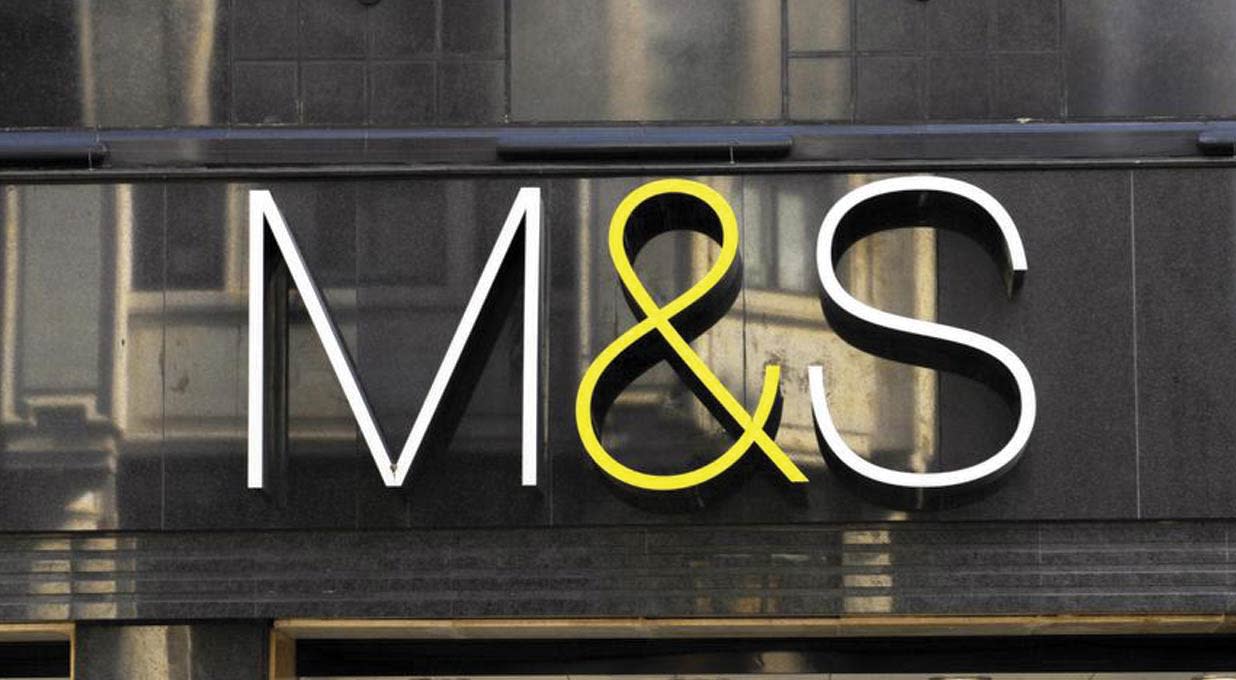Marks and Spencer reported third-quarter revenue of £3.9bn, up 6.4% on a like-for-like (LFL) basis and ignoring the impact of exchange rates.
Food revenue was up 8.9% on a LFL basis to £2.6bn, driven by a 6.6% uplift in volumes, making M&S the top-performing store-based grocer in terms of volume growth over the period. The Remarksable value line also performed particularly well, with sales up 14%.
In Clothing, Home & Beauty, LFL revenue rose 1.9% to £1.3bn as the group continued to gain market share. Renewed stores continued to “outperform expectations” but in-store sales fell 1.5%, in part due to poor weather. Online sales grew at double-digit rates and now account for over a third of the division’s total.
M&S hasn’t given any full-year guidance, but markets are forecasting full-year revenue growth of around 5.5% to £13.8bn.
The shares fell 5.3% in early trading.
Our view
Despite delivering a strong set of third-quarter results, which were slightly ahead of market forecasts on most metrics, Marks & Spencer’s valuation fell on the day. That’s likely due to the lack of full-year guidance this late in the year, which appears to have spooked some investors.
Diving into performance, sales growth in the Clothing, Home & Beauty division reflects improved customer perceptions of value, quality, and style. That’s by no means an easy feat and a key reason for M&S being able to sell more than 80% of clothes at full price at the last count, far higher than many of its rivals.
We’re pleased to see investment in improving its digital platforms is paying off, with double-digit growth in online sales. Levelling up its online offering will be key to driving future sales higher, especially given how tough the world of clothing retailers is.
Demand for M&S food remains robust, with volumes continuing to grow ahead of the broader market. Operational changes and efficiencies are delivering cost savings, which are being used to keep food prices down. This is helping to attract more families, who on average spend more on each shop, allowing M&S to scoop up a greater share of the nation’s weekly food budget.
Last we heard, M&S's joint venture with Ocado remains loss-making. There’s still potential to significantly improve productivity and revenue, but while losses have narrowed, we remain cautious about when this progress will come. The disagreement between the two parties over payments for hitting (or missing) certain performance targets remains up in the air. Tension in a business partnership is far from ideal.
Operational and strategic improvements mean the business is healthier than it has been in some time. Enhanced cash generation and a robust balance sheet have enabled a continued reduction in net debt. This financial stability has seen dividends be restored, after several years of non-payment. While the prospective yield of 1.8% is modest, we can’t knock the progress. As ever though, no dividends can be guaranteed.
Even this late in the year, no explicit full-year guidance has been given, which has unsettled some investors. While frustrating, the bigger picture needs to be kept in mind, and M&S looks to be nailing its transition towards a leaner and stronger business. The valuation is in line with peers, which doesn’t look too demanding to us given the above-average growth in food volumes. But competition will remain extremely tough, and volatility in the near term can't be ruled out.
Environmental, social and governance (ESG) risk
The retail industry is low/medium in terms of ESG risk but varies by subsector. Online retailers are the most exposed, as are companies based in the Asia-Pacific region. The growing demand for transparency and accountability means human rights and environmental risks within supply chains have become a key risk driver. The quality and safety of products as well as their impact on society and the environment are also important considerations.
According to Sustainalytics, Marks & Spencer’s management of ESG risk is average.
ESG issues are overseen by M&S’ board and ESG committee, suggesting that these are integrated into the core business. However, ESG-related disclosures only reference a handful of recognised sustainability frameworks. The group has also been accused of not providing full emergency relief payments to garment workers in Sri Lanka affected by the severe economic crisis there.
Marks & Spencer key facts
All ratios are sourced from Refinitiv, based on previous day’s closing values. Please remember yields are variable and not a reliable indicator of future income. Keep in mind key figures shouldn’t be looked at on their own – it’s important to understand the big picture.
This article is not advice or a recommendation to buy, sell or hold any investment.No view is given on the present or future value or price of any investment, and investors should form their own view on any proposed investment.This article has not been prepared in accordance with legal requirements designed to promote the independence of investment research and is considered a marketing communication.Non - independent research is not subject to FCA rules prohibiting dealing ahead of research, however HL has put controls in place(including dealing restrictions, physical and information barriers) to manage potential conflicts of interest presented by such dealing.Please see our full non - independent research disclosure for more information.


